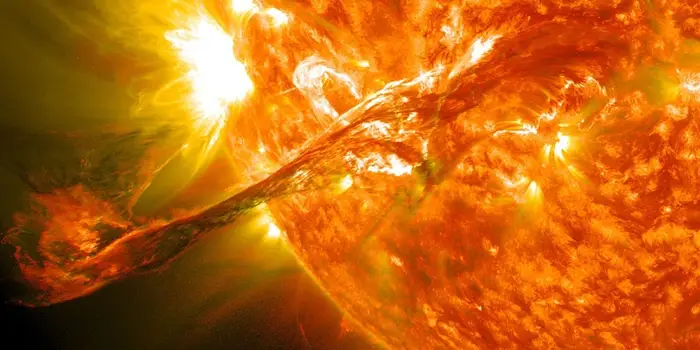
The sun is becoming increasingly restless before its peak, thus increasing the likelihood of a major “storm” – a rare but very dangerous phenomenon that, according to NASA, can “cripple economies and jeopardize human safety.”
Three different solar events can send high-speed particles that affect the Earth’s magnetic fields: solar flares, coronal holes, or coronal mass ejections – large explosions on the Sun. If we are “bombarded” with sufficient force, the Earth’s ionized layer, which protects the planet from the worst effects of space weather, may peel off and “open the way” for even more particles to enter.
“We’re talking about a once-in-a-hundred-year event,” said Matthew Owens, a professor of space physics at the University of Reading.
Such a storm is most likely to occur during the peak of solar activity, which occurs approximately every 11 years, when the Sun’s magnetic field lines become more tangled and twisted, predicting the appearance of more sunspots, coronal holes, and coronal mass ejections.
“These storms don’t happen every cycle, but during the strongest one – like the one that’s coming – there’s a higher probability of an event that will cause power outages here on Earth,” said Daniel Verscharen, associate professor of space and climate physics at University College London.
The most powerful solar storms
The Carrington Event of 1859, or the Solar Superstorm, was the most powerful solar storm ever recorded – but at the time, there was not much infrastructure in the world that could have been affected. However, even then, the storm was dramatic, as fires broke out at telegraph stations around the world.
Another notable solar storm was recorded in 1989, and although it was less powerful than the previous one, there was more infrastructure, so it caused significant damage. A power surge caused a 12-hour blackout in Quebec and disabled shortwave radio. The Canadians thought that the USSR was jamming radio signals-a misunderstanding that could have been dangerous during the Cold War.
Since the 1990s, our dependence on communications, satellites, power grids, and other critical infrastructure has grown exponentially. So if such a storm were to occur today, the world would face global power outages, satellites, and important communication networks, according to NASA.
What to expect from the Sun today?
The current solar cycle was expected to be moderate, but it is already more active than the previous one. Another concern is that the Sun’s magnetic fields also point south, which means that charged particles are more likely to carry a magnetic charge opposite to the Earth’s magnetic field, giving them an even greater chance of penetrating our planet’s shielding.
However, researchers still think that the probable storm is unlikely to match the Carrington event.
Solar flares caused by the current cycle have already caused radio communications on Earth to go down this year and problems with scientific equipment in space, and Elon Musk’s SpaceX lost 40 Starlink satellites due to a solar storm.
The current cycle is expected to peak around 2025. Until then, countries in higher latitudes, such as the United States, Canada, Sweden, and the United Kingdom, should be especially cautious, as they are most vulnerable to sunny weather.
However, with a sufficiently accurate warning, catastrophic consequences can be prevented, for example, if operators strategically shut down the power grid in time, change the route of aircraft or the location of satellites. The European Space Agency is planning to launch the Vigil satellite, which is to go behind the Sun to spot potentially dangerous sunspots and coronal holes a few days before they appear on Earth.

